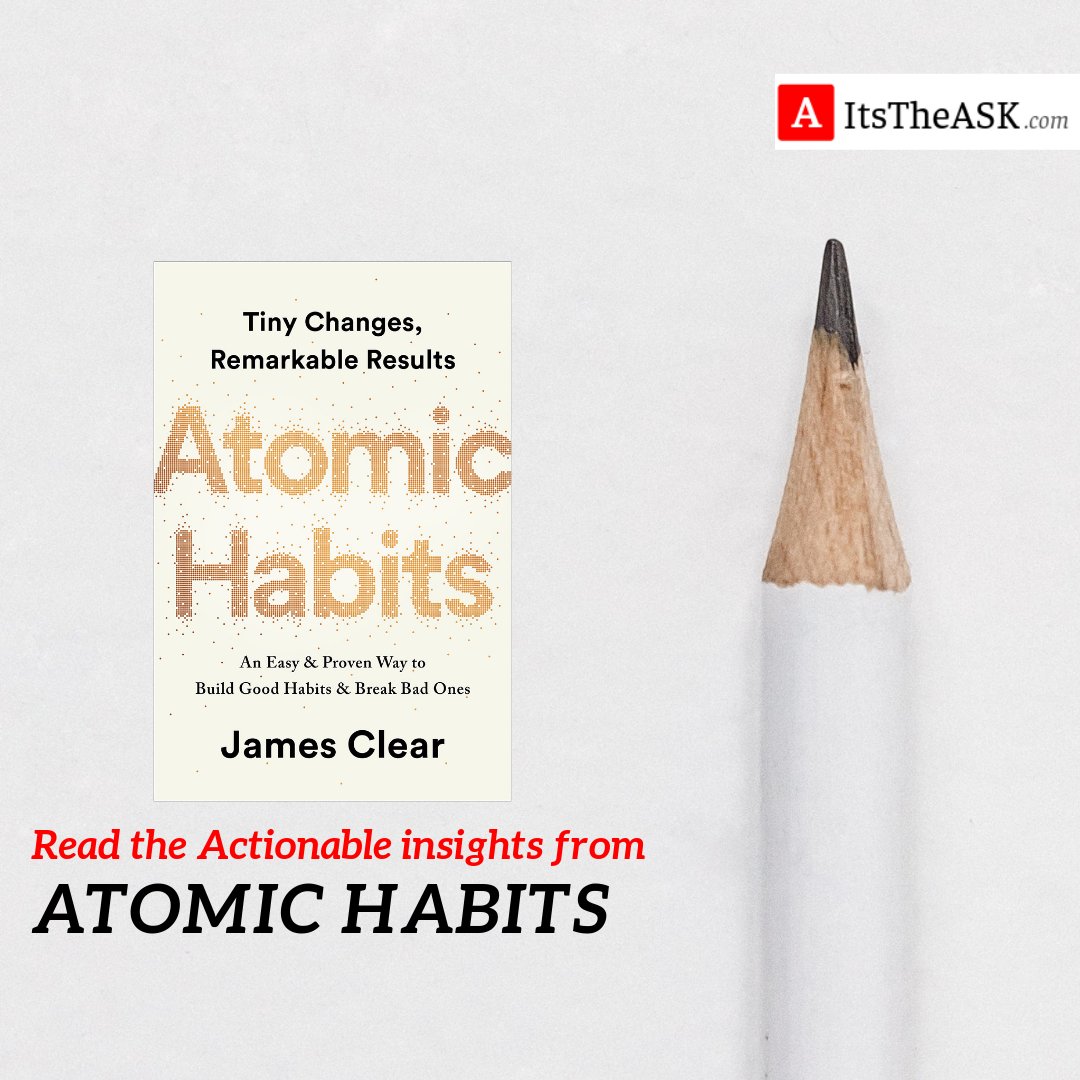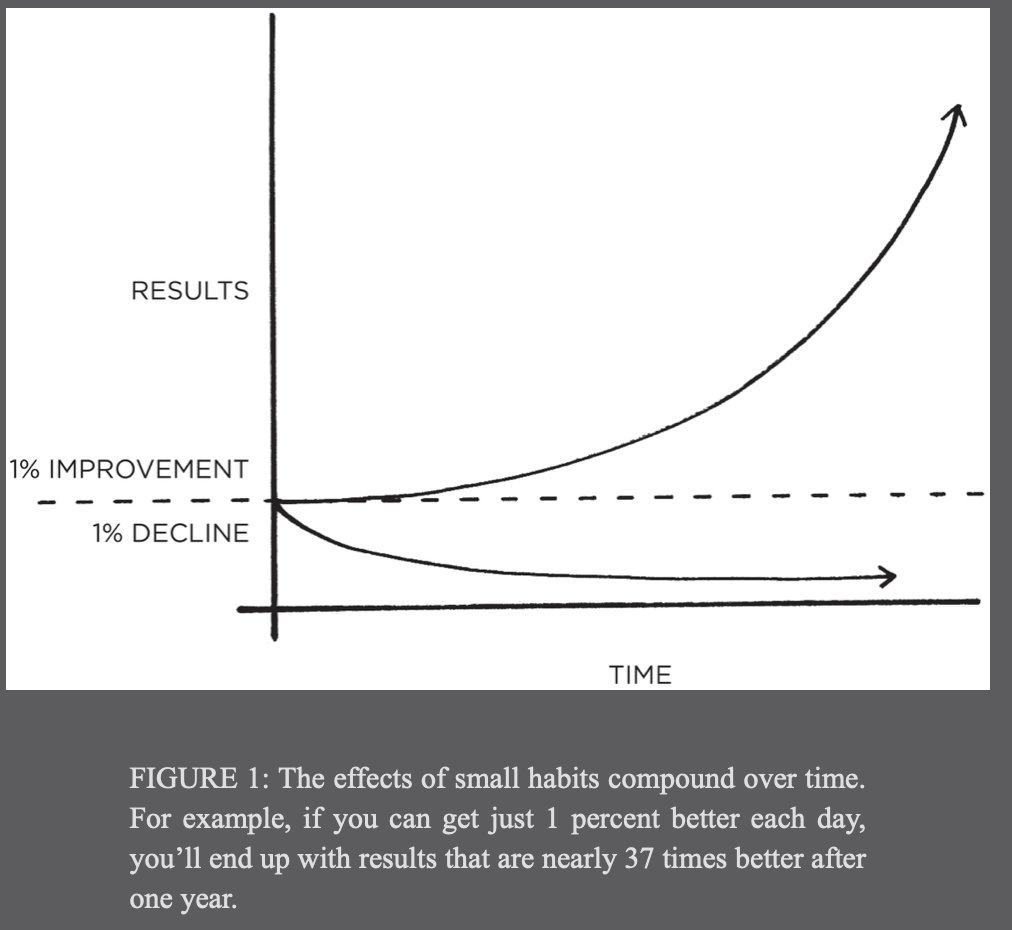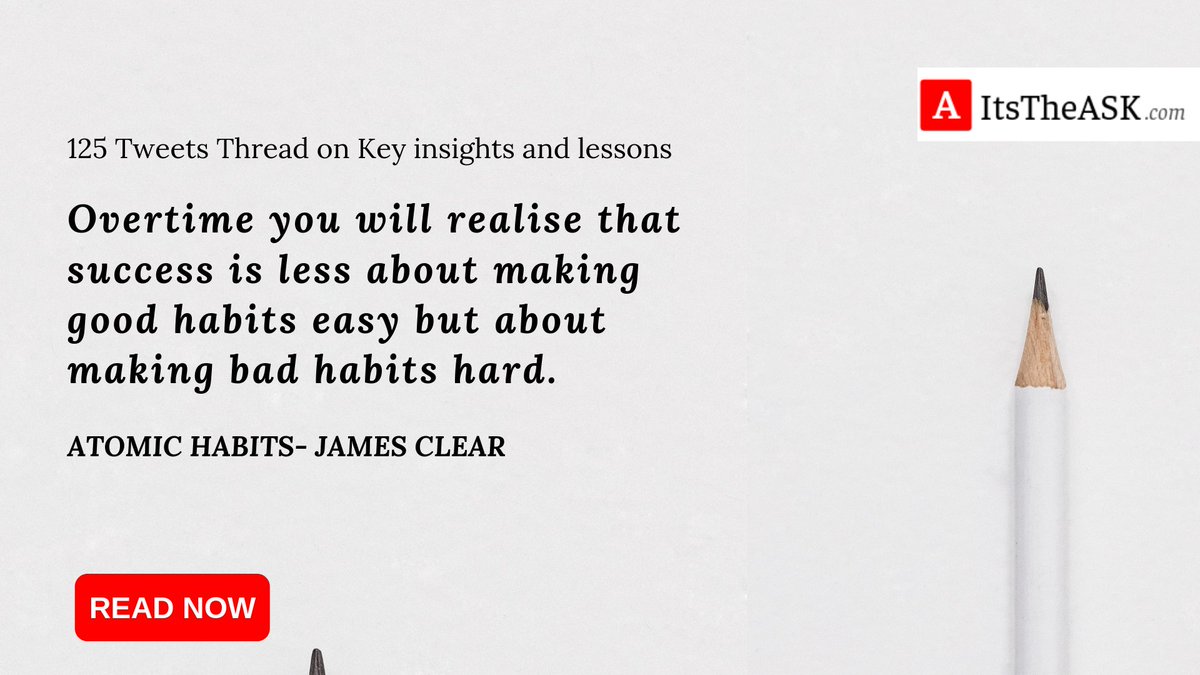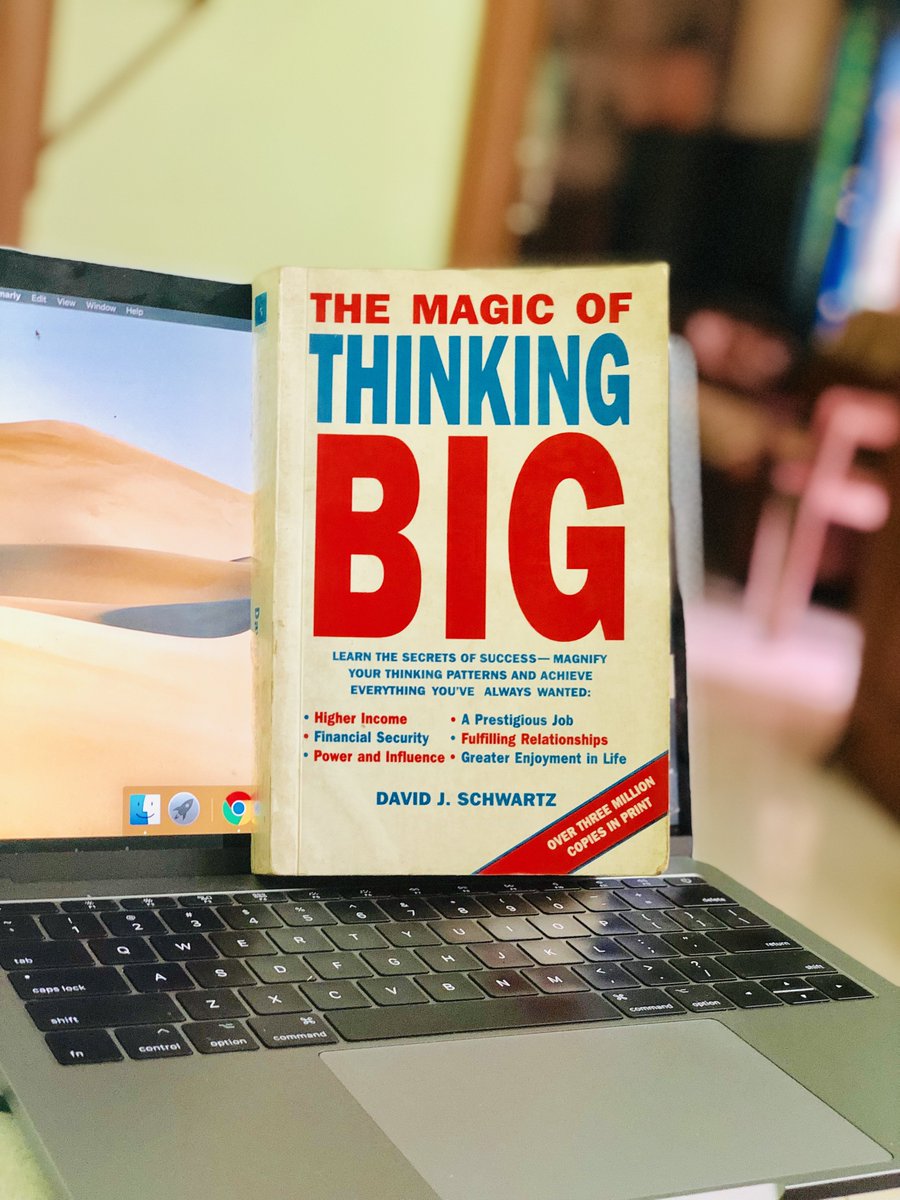
1% worse every day for one year. 0.99365 = 00.03
1% better every day for one year. 1.01365 = 37.78
Winners and Losers both have the same goals ( All want to win Championships/ goals)
Achieving a goal is momentary change.
Goals restrict your happiness
Goals are at odds with long-term progress
We try to change the wrong thing and
We try to change our habits in the wrong way.
1: Outcomethe: losing weight, changing Job, publishing the blog post
2: Processes:implementing a new routine to achieve the set goals
3: Identity:Changing your beliefs, your worldview, your self-image your judgment about others and yourself.
Decide the type of person you want to be.
Prove it to yourself with small wins.
Problem Phase
Cue- Trigger to the brain to initiate a behaviour - basically with little information on reward
Cravings- the motivational force behind every habit. An important thing to note: We don’t crave the habit
Solution Phase
Response: The actual habit that we perform. Its about obtaining the reward.
Reward: This has two purpose A. Satisfy the craving. B. Teach us which actions are worth remembering.
“The 1st law (Cue): Make it obvious.
The 2nd law (Craving): Make it attractive.
The 3rd law (Response): Make it easy.
The 4th law (Reward): Make it satisfying.
Inversion of the 1st law (Cue): Make it invisible.
Inversion of the 2nd law (Craving): Make it unattractive.
Inversion of the 3rd law (Response): Make it difficult.
Inversion of the 4th law (Reward): Make it unsatisfying.
What went well this year?
What didn’t go so well this year?
What did I learn?
What are the core values that drive my life and work?
How am I living and working with integrity right now?
How can I set higher standards in future?








